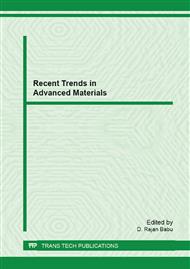p.494
p.499
p.504
p.511
p.516
p.521
p.526
p.531
p.536
Effect of Vibratory Treatment on Hot Cracking Resistance in AA6061 Alloy
Abstract:
AA6061 alloy is most widely used in aircraft fittings, marines fitting and automobile industries. This alloy can be joined by fusion welding process like Gas Tungsten Arc Welding (GTAW). An important metallurgical difficulty in arc welding of this alloy is hot cracking. As the name indicates, this kind of cracking occurs while the metal is still hot. It usually occurs in the fusion zone during solidification. The main aim of this work is to investigate the effect of vibratory treatment on hot cracking of AA6061 alloy. Houldcroft hot cracking test is used to determine the hot cracking tendency. Weld bead was made on AA6061 alloy specimen in the presence and absence of vibratory treatment. Vibratory treatment was carried out in the frequency range of 250 Hz to 900 Hz. Weldments made with and without vibratory treatment were compared using hot cracking tests. Test results show that by applying vibratory treatment, hot cracking can be largely controlled in AA6061 alloy.
Info:
Periodical:
Pages:
516-520
Citation:
Online since:
October 2012
Authors:
Keywords:
Price:
Сopyright:
© 2012 Trans Tech Publications Ltd. All Rights Reserved
Share:
Citation:


